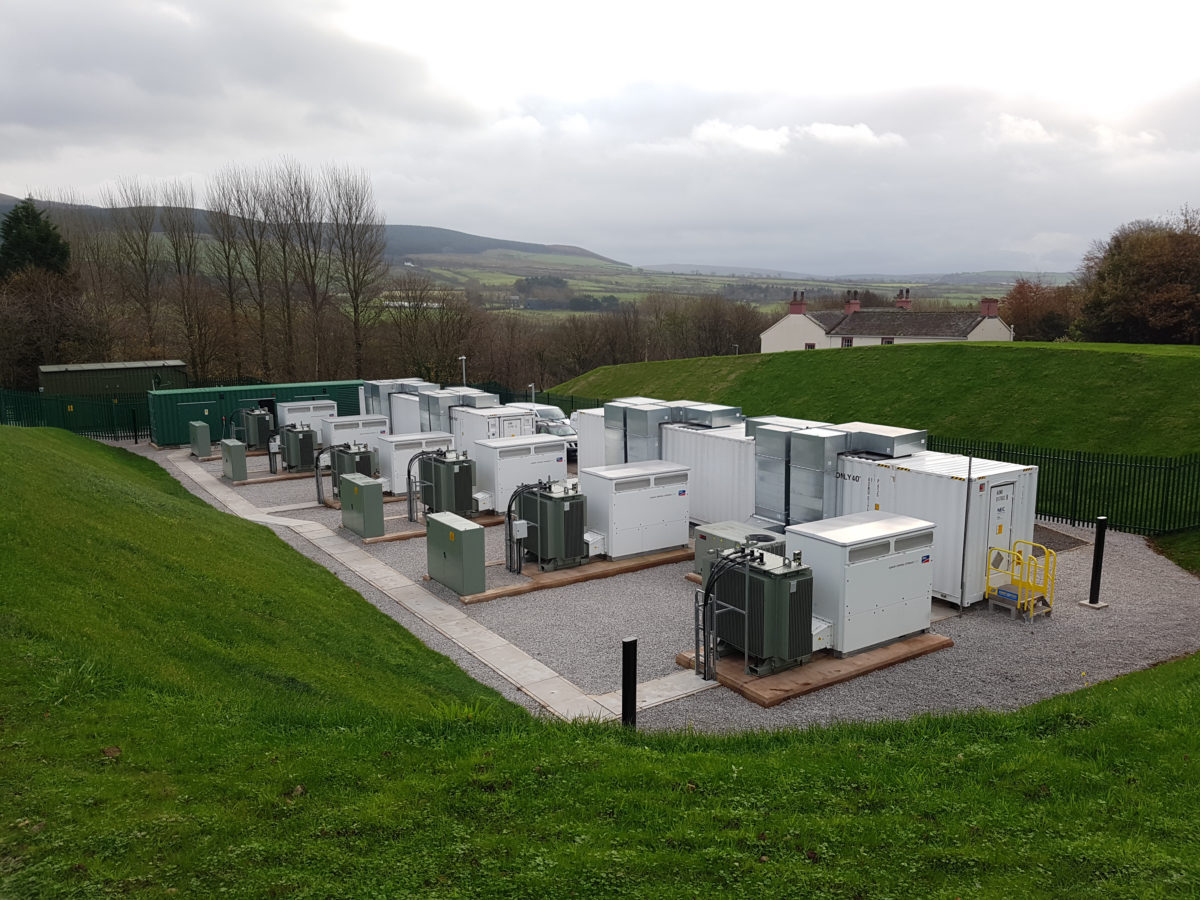The U.K.’s transmission system operator, National Grid today released the preliminary results of its T-1 Capacity Market Auction for delivery in 2018/19, which concluded yesterday, February 1.
The aggregate capacity of capacity market units (CMUs) awarded capacity agreements totals 5.78 GW, or 213 CMUs from 114 applicant companies, out of a total 10.66 GW which entered the auction. The clearing price has been set at £6 per kW per year.
As indicated in a table displaying a breakdown of the awarded capacity by fuel type, gas, at 75.55% or 4.36 GW was the clear winner, followed by coal at 7.57% or 437 MW (a total of 2.8 GW of coal-firing plants exited the auction), and demand-side response (DSR) at 7.45% or 430.5 MW.
Battery storage, meanwhile, received just 1.69% of the contracts, or 97.51 MW, across 16 projects. These include new build generating CMUs totaling: 7.47 MW and 2.13 MW for the Foresight Group’s Port of Tyne and Nevendon projects, respectively; and 8.53 MW and 2.13 MW for VLC Energy’s Glassenbury and Cleator storage projects.
Solar receives one mention, with the Twin Oaks Solar Farm Ltd receiving a new build generating CMU for 4.71 MW.
Reacting to the news, James Court, Head of Policy and External Affairs at the REA said, “The Government has confirmed that there will be no new spending on renewable power beyond 2021 and there is a significant lack of clarity around the future of renewable heat and transport fuels.”
He added, “The clean growth plan talked a good game, but failed to walk the walk. We are in the bizarre situation where we are propping up fossil generation, but scaling back support for technologies that are cheaper, cleaner and will provide future proofed jobs. The government’s energy policy needs a complete rethink or we will be left behind with a dirty, antiquated and expensive energy system.”
The lack of support for renewables is puzzling, particularly given the fact that they provided more power than coal last year. According to data from the period January 1 to December 12, 2017, renewables produced more power than coal plants on 315 days. Broken down by generation source, wind bested coal on 263 days of the year, while solar bettered coal’s output on 180 days.
Popular content
Gas remains the most dominant source of baseload electricity generation power in the U.K., however, with wind outperforming gas on just two days of the year, while for renewables combined, that figure was a modest 23 days.
Looking at the solar statistics for the 11 months up to the end of November, the country added 902 MW of PV capacity to reach a cumulative total of 12.64 GW, which is around 7% higher than last year.
Battery storage is also showing strong growth. Recent announcements include: New government funding totaling £42 million ($58.5 million) for the newly founded Faraday Institution to support further battery storage research in late January: and the completion of U.S.-based NEC Corporation’s subsidiary, VLC Energy’s 50 MW U.K. energy storage project, which comprises two facilities: 40 MW in Glassenbury, Kent, and 10 MW in Cleator, Cumbria.
Last week also saw a conference held in London, where the future development of storage technologies and the challenges accompanying the integration of storage in energy systems. The outcome of two major energy storage interdisciplinary research projects – the Energy Storage for Low Carbon Grids and Integrated; and the Market-fit and Affordable Grid-scale Energy Storage – which were developed by 10 U.K. universities, were a focus.
Watch out for pv magazine's 30 page Energy Storage special, which has been prepared in cooperation with the Energy Storage Europe exhibition, to be held in Düsseldorf, Germany, this March 13 to 15.
The article was amended on February 5, to change the reference from “NEC ES’ Glassenbury and Cleator storage projects”, to “VLC Energy's Glassenbury and Cleator storage projects”. Apologies for the discrepancy.
This content is protected by copyright and may not be reused. If you want to cooperate with us and would like to reuse some of our content, please contact: editors@pv-magazine.com.



By submitting this form you agree to pv magazine using your data for the purposes of publishing your comment.
Your personal data will only be disclosed or otherwise transmitted to third parties for the purposes of spam filtering or if this is necessary for technical maintenance of the website. Any other transfer to third parties will not take place unless this is justified on the basis of applicable data protection regulations or if pv magazine is legally obliged to do so.
You may revoke this consent at any time with effect for the future, in which case your personal data will be deleted immediately. Otherwise, your data will be deleted if pv magazine has processed your request or the purpose of data storage is fulfilled.
Further information on data privacy can be found in our Data Protection Policy.